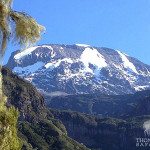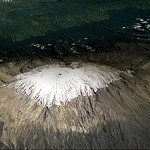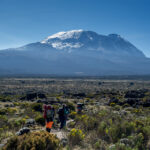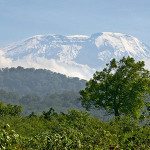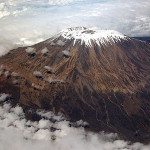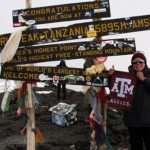 Ngorongoro once rose much, much higher than the 7500 foot rim.
Ngorongoro once rose much, much higher than the 7500 foot rim.
Photo: Andy Biggs
Today, the Ngorongoro Crater’s rim rises just 7,500 feet above sea level; visitors might experience chilly nights, and anyone peering from the rim down to the crater floor, which sinks 2,000 feet below, might have a momentary sense of vertigo…but then again, maybe not. In the Great Rift Valley, where mountains—even volcanoes—are common, the crater rim only qualifies for “hill” height these days.
Once, though, the slopes reached much higher. In fact, if Ngorongoro hadn’t collapsed, we might have been calling it (and not Kilimanjaro) “the Roof of Africa.”
The entire length of the Great Rift Valley—actually a system of rifts which run generally north to south from Eritrea all the way to Mozambique, resulting from the spreading of two tectonic plates deep underground—is studded with volcanoes. Most of these are now dormant, like Kilimanjaro, though some, like Ol Doinyo Lengai, are still very much active.
The volcano at Ngorongoro was once part of this chain, but over time, lava flows beneath it retreated. Today, the crater is what’s known as a volcanic caldera, a depression formed when a volcano collapses (at 10 miles in diameter, the Ngorongoro crater is the largest intact caldera in the world).
The mountain had been topped by a solid cap of lava, but without the support of the pressurized magma beneath it, it could no longer support itself, and somewhere between 2 and 3 million years ago, the mountaintop collapsed into the crater we know today.
While the crater rim isn’t particularly high, geologists believe the mountain would have rivaled Kilimanjaro (which tops out at 19,341 feet) before its collapse; it’s possible it would have reached even higher!
 Zebras and wildebeest on the floor of Ngorongoro Crater
Zebras and wildebeest on the floor of Ngorongoro Crater
Photo by Thomson Safaris guest, Helen Parrish
Instead, Ngorongoro today is ringed with gentle slopes covered year-round in lush vegetation, and houses some 30,000 mammals in just over 100 square miles. It’s one of the last places on earth where a traveler can hope to see all of the “big five” species (lion, leopard, African buffalo, black rhinoceros, and elephant) in one day.
So while it may no longer rival Kili’s height, the crater—with its unmatched wildlife viewing and unique, lush landscape—is definitely just as capable of taking your breath away!

